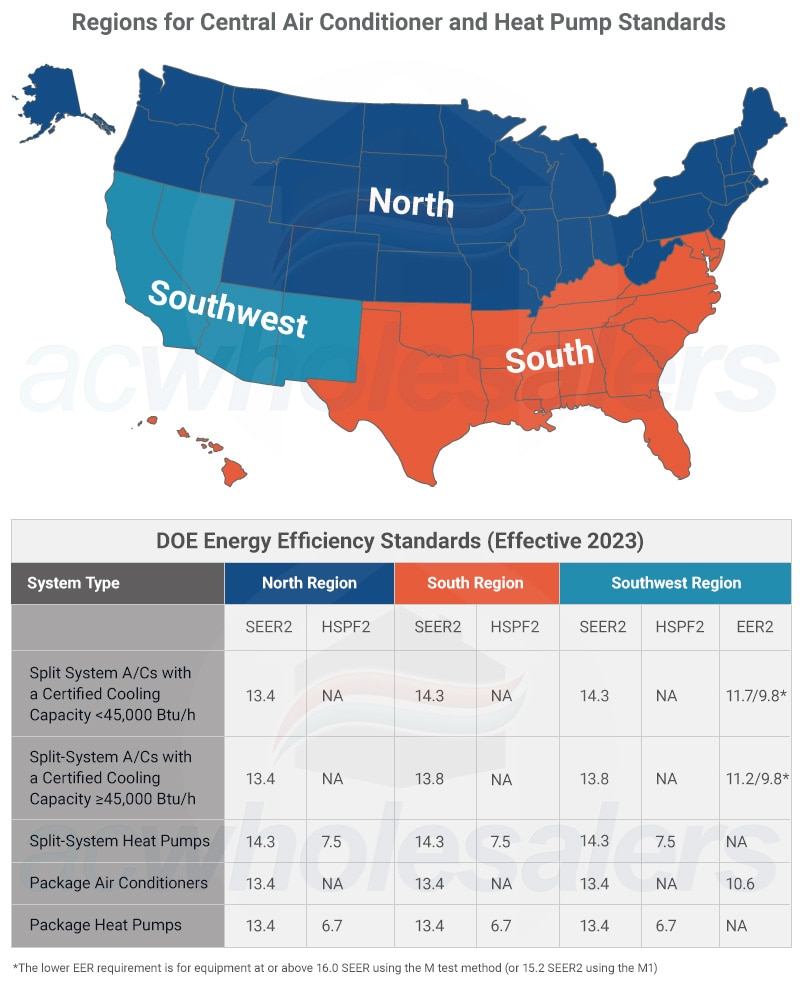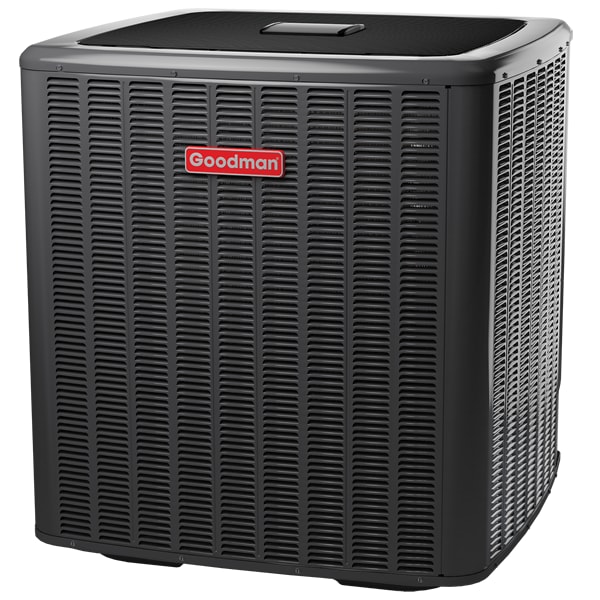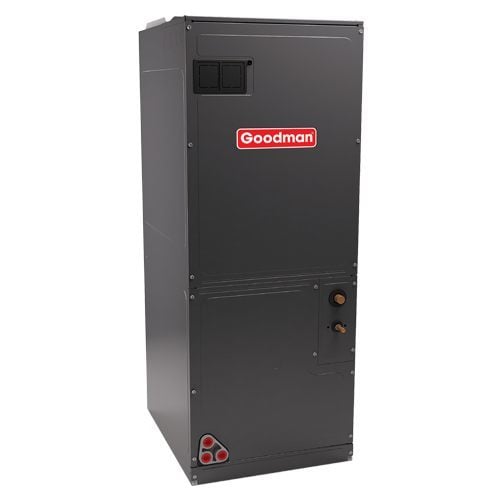
How Does an Air Conditioner Work?
Did you know there is no such thing as “cold?” There is only the absence of heat. When you place an ice cube in your mouth, it removes heat; it doesn’t add cold. Heat is nothing more than energy, and it is naturally drawn to areas of lower energy.
This principle is the basis of modern central air conditioning units, which pump refrigerant through an air handler in your home and remove the heat from warm air passing through it. The “cool” air gets recycled into your home while the warm refrigerant flows outside where its heat is dissipated. The refrigerant then returns inside for a new cycle.
In this guide, we’ll review the process in detail and tell you everything you need to know before buying a central air conditioner.
Central Air Basics
There are three basic central AC components that work together to cool your home: an indoor evaporator coil, a blower, and an outdoor condenser unit.
The evaporator coil and blower are located inside the home’s air handler/furnace. NOTE: A furnace and air handler serve the same function, except, in colder climates, a furnace provides warmth. When in air conditioning mode, a furnace will simply circulate cool air like an air handler.
The outdoor component of the AC system contains a compressor and condensing coils. All three parts of an air conditioner operate within the same cycle to cool your home. Below, we’ve broken this cycle down, but remember it’s all happening in tandem.
Indoor Evaporator Coil
 The primary job of the indoor evaporator coil in an air conditioning system is to remove heat and moisture from indoor air as follows:
The primary job of the indoor evaporator coil in an air conditioning system is to remove heat and moisture from indoor air as follows:
- Cold refrigerant flows through the evaporator coil.
- A fan blows warm indoor air across the evaporator coil.
- The cold refrigerant absorbs the heat from the warm air and turns into a gas.
- The warm air also condenses over the evaporator coil and loses moisture.
- The warm, gaseous refrigerant moves outside through a line set.
- Excess moisture drips into a pan and is pumped out via indoor plumbing.
Blower
Once the indoor evaporator coil removes heat from the air, the blower forces the cooled air through ductwork around the home. It will continue doing so until the thermostat tells it to stop (i.e. It has reached the setpoint).
Outdoor Condenser Unit
So what happens to the warm refrigerant after it leaves the evaporator coil as a gas? It’s carrying the warmth from your home and must get rid of it somehow. That’s where the outdoor condenser unit comes in.
The gas moves outside via a refrigerant line set. Once it reaches the outdoor unit, a compressor pumps it through cooling coils where the heat in the gas is dissipated as it reverts into liquid refrigerant. The cooled refrigerant then moves back into the home evaporator coil to begin the process again.
AC Efficiency
There are various components and terms you will encounter when it comes to picking an efficient air conditioner.
What is the SEER2 Rating?
The Seasonal Energy Efficiency Ratio (SEER2) represents the amount of heat removed from your home divided by the amount of electricity used. It is the industry standard for measuring an air conditioner’s efficiency.

Modern AC systems range from 13 SEER2 to 24 SEER2. The rating considers the entire system’s efficiency, including that of the compressor, evaporator coil, line set, and even the furnace/air handler. Thus, these components must be purchased together in order to achieve the desired SEER2.
For example, if you buy a compressor with a high SEER2 rating, but the evaporator coil is less efficient, you won’t get the full efficiency the compressor advertises.
Compressor Efficiency
 There are different types of compressors for your outdoor AC unit that can impact the efficiency of your entire system.
There are different types of compressors for your outdoor AC unit that can impact the efficiency of your entire system.
- A single-stage compressor operates at either full capacity or not at all. It’s like if your television was always either on full volume or muted. In the case of the air conditioner, it will keep you comfortable on the hottest days. However, if the compressor is providing maximum cooling on a milder day, you might feel chilly, and you’ll be wasting energy.
- In a two-stage compressor, the compressor has two stages of cooling output: Low and High. In our television example, it would be like having the choice between setting the volume to 25 or a maximum of 50. This type of compressor is much more efficient because the low setting can be used for milder weather, leaving the high setting to alleviate the hottest days.
Indoor Unit Efficiency
 Understanding your indoor unit's internal components will help you maximize efficiency.
Understanding your indoor unit's internal components will help you maximize efficiency.
When it comes to your evaporator coil, which is housed in the air handler or furnace, you need to make sure its size is proportional to that of the outdoor condenser coil.
Remember, the evaporator coil removes heat from the air and sends it to the condensing coil to be dissipated. If there is a mismatch between the two, your system won’t be able to remove heat efficiently, energy costs will increase, and you’ll be less comfortable.
AC Air Filters
The air filter protects your air handler/furnace from harmful dirt and debris. Depending on the MERV rating, remember to replace it every 60-90 days (or more if you have pets or allergies).
Located between the return air duct and the air handler/furnace, the air filter captures particles from return air flowing into the unit. Without it, those particles would damage the evaporator coil and blower, not only compromising efficiency, but also destroying the entire unit eventually.
Once you wrap your mind around how central air conditioners remove heat instead of adding “’cold,” the system begins to make sense. Now that you understand the basics of AC, you can shop for an efficient unit with confidence and stay cool.
NEXT: View and Shop Air Conditioners





